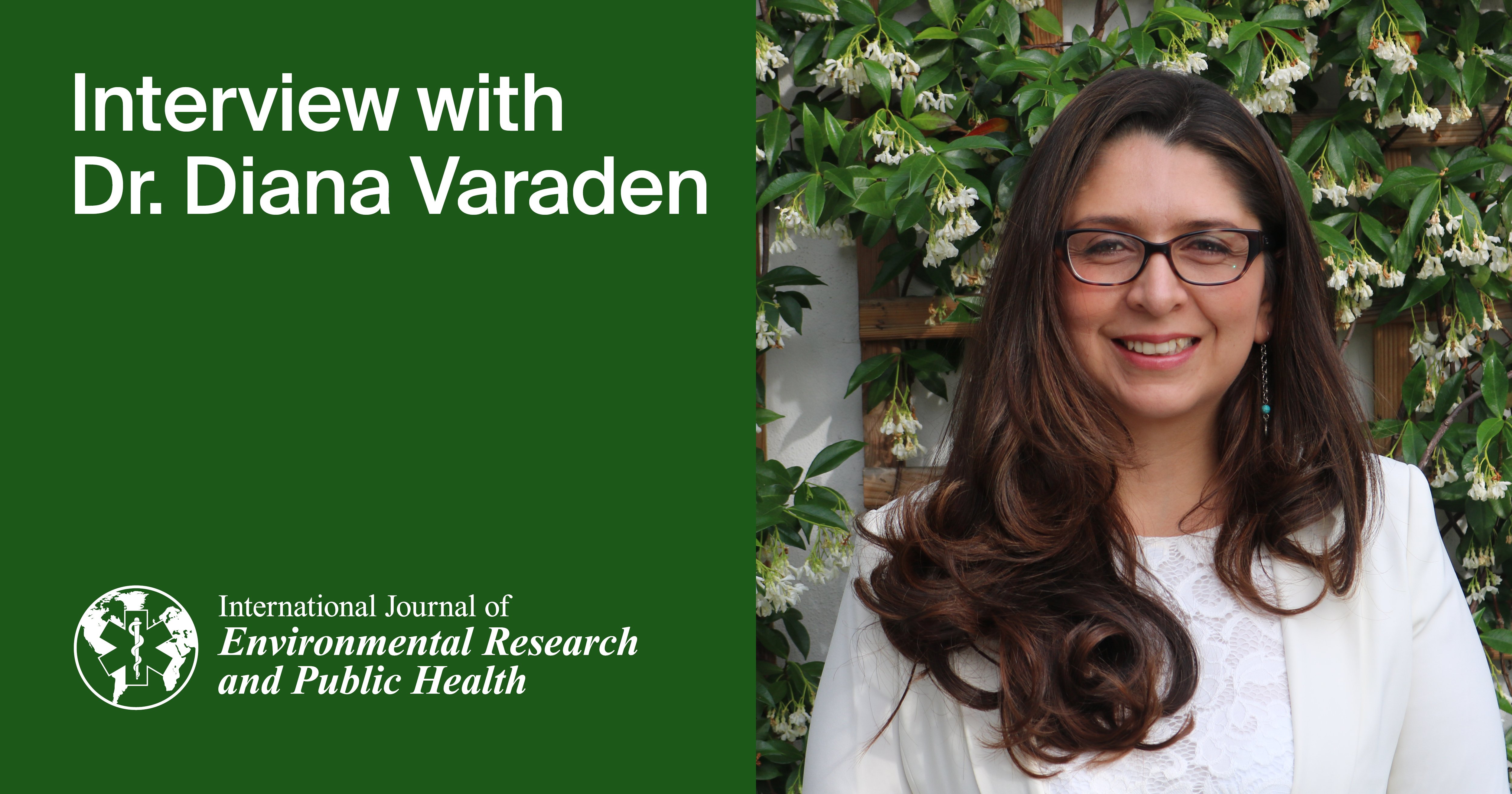
Journal Menu
► ▼ Journal Menu-
- IJERPH Home
- Aims & Scope
- Editorial Board
- Reviewer Board
- Topical Advisory Panel
- Instructions for Authors
- Special Issues
- Topics
- Sections & Collections
- Article Processing Charge
- Indexing & Archiving
- Editor’s Choice Articles
- Most Cited & Viewed
- Journal Statistics
- Journal History
- Journal Awards
- Society Collaborations
- Editorial Office
Journal Browser
► ▼ Journal Browser-
arrow_forward_ios
Forthcoming issue
arrow_forward_ios Current issue - Vol. 22 (2025)
- Vol. 21 (2024)
- Vol. 20 (2023)
- Vol. 19 (2022)
- Vol. 18 (2021)
- Vol. 17 (2020)
- Vol. 16 (2019)
- Vol. 15 (2018)
- Vol. 14 (2017)
- Vol. 13 (2016)
- Vol. 12 (2015)
- Vol. 11 (2014)
- Vol. 10 (2013)
- Vol. 9 (2012)
- Vol. 8 (2011)
- Vol. 7 (2010)
- Vol. 6 (2009)
- Vol. 5 (2008)
- Vol. 4 (2007)
- Vol. 3 (2006)
- Vol. 2 (2005)
- Vol. 1 (2004)
Need Help?
Announcements
14 May 2025
International Journal of Environmental Research and Public Health | An Interview with the Author—Dr. Diana Varaden

Name: Dr. Diana Varaden
Affiliations: 1 Environmental Research Group, School of Public Health, Imperial College London, London W12 0BZ, UK; 2 MRC Centre for Environment and Health, Imperial College London, London W12 0BZ, UK; 3 NIHR HPRU in Environmental Exposures and Health, Imperial College London, London W12 0BZ, UK
Research interests: air pollution exposure, participatory research, public engagement, risk perception and communication, and implementation science
“West London Healthy Home and Environment (WellHome) Study: Protocol for a Community-Based Study Investigating Exposures Across the Indoor-Outdoor Air Pollution Continuum in Urban Communities”
by Diana Varaden, Benjamin Barratt, Margaret J. Dallman, Adam Skillern, Munira S. Elmi, David C. Green, Anja H. Tremper, Michael Hedges, William Hicks, Max Priestman et al.
Int. J. Environ. Res. Public Health 2025, 22(2), 249; https://doi.org/10.3390/ijerph22020249
Available online: https://www.mdpi.com/1660-4601/22/2/249
The following is a short interview with Dr. Diana Varaden:
1. Congratulations on your recent publication! Could you briefly introduce yourself and your current research focus?
Thank you. I am a Lecturer in environmental social science and health in the Environmental Research Group at Imperial College London. My background is multidisciplinary, spanning the fields of air pollution and social science. I am passionate about interdisciplinary research that bridges natural sciences, social sciences, and health, and particularly about creating opportunities for public participation in the research process. My research focuses on understanding the needs of vulnerable and disadvantaged communities to inform more holistic and effective environmental and health interventions. Our recent publication presents a study protocol for a community-based project investigating exposure to indoor and outdoor air pollution in urban settings, with a focus on households in West London that include children affected by asthma or allergies.
2. Could you describe the difficulties and breakthrough innovations in this research field?
One major challenge in indoor air quality research is conducting studies in personal spaces like people's homes. This requires participants' full consent and engagement, which can be difficult to obtain given the private nature of domestic life. Behaviors indoors are shaped by a range of factors—social, economic, cultural, religious—which further complicates research design and data collection.
Additionally, public awareness around indoor air pollution remains low compared to outdoor pollution, which can reduce willingness to participate or recognize the importance of the issue. Overcoming this challenge requires clear communication and community trust.
3. What motivated you to conduct this research?
I am deeply motivated by the need to address the interconnected challenges of air pollution, public health, and climate change. These issues must be considered together, rather than in isolation, if we are to design effective and sustainable policies. There is a pressing need to understand the sources and health impacts of indoor air pollution, particularly in the context of emerging climate mitigation strategies like retrofitting homes for energy efficiency. Research in this area should explore not only technical feasibility, but also economic viability and social acceptability in order to deliver lasting benefits.
4. How do you evaluate the research trends in your field, and what would your advice be to early career scholars?
Research in this space is becoming increasingly collaborative and multidisciplinary, as it needs to address complex, systemic, and interconnected issues. I would encourage young scholars to embrace interdisciplinary teams and actively engage the communities they aim to serve—not only as study participants but as contributors to research design and implementation. Incorporating lived experiences into research methodologies allows for the creation of more grounded and actionable solutions. This approach is crucial for developing interventions that are truly community-centered and capable of making a meaningful impact.
The journal has a strong reputation in our field, and I was already familiar with several key papers published in IJERPH. Our experience was very positive. The assigned editor was responsive and supportive throughout the process, and the reviewers provided constructive and insightful feedback.
One small suggestion for improvement: since our submission was a study protocol, one of the reviewers seemed to expect a full research paper with results. It might be helpful to flag the article type more clearly to reviewers in such cases. Other than that, the entire process—from submission to publication—was efficient and smooth.



